The Economy of Wraps in Fly Tying
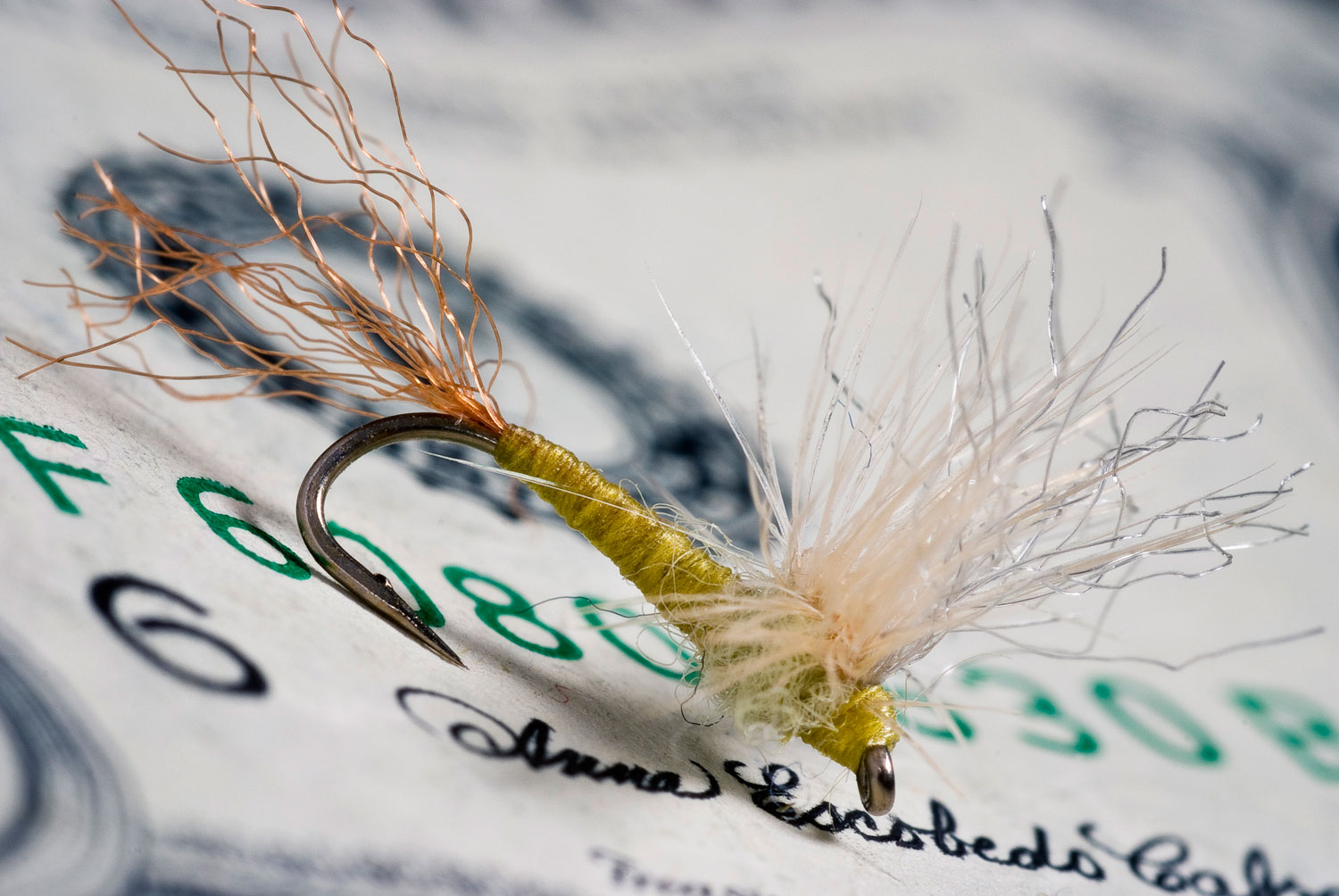
THE HALLMARK OF WELL-TIED FLIES IS NATURAL PROPORTION.
This is never more true than when tying tiny trout flies. Trout are visual feeders and there are three primary criteria that a fly must meet to elicit a positive response. It must match the natural in size, color and profile. Of these three, the hardest to match in tiny flies is profile.
There are several elements to a fly’s profile. It must have the appropriate style of wing and the right size hackle, for example, but where most of us miss the mark is in the proportion of the body. Primarily because most tiers, often including myself, use too many wraps of thread.
Using too much thread builds bodies that are too thick and often lumpy and awkward. It always matters but when tying patterns smaller than size 16 every wrap is critical. Using too many wraps to secure a material will cause awkward lumps in the tiny profile which make the fly look unnatural. That can cost you a discerning fish.
HERE ARE SOME TECHNIQUES THAT WILL HELP YOU TIE MORE NATURAL FLIES BY SPARING THE THREAD.
Make a plan
It’s easy to become task oriented when tying. When you focus only on the material you are tying in, you end up doing repetitive tasks. Plan ahead. Think of the fly as a whole and take a minute to think it through before you tie. You can often catch in several materials with a single wrap each, then secure them together as you wrap up the hook shank.
Catch materials in early
Materials like ribbing wire can be caught in as you first wrap your thread down the hook shank. This conserves an entire layer of thread. There’s no need for a thread base to tie the wire into, because once it’s wrapped around the body, it can not be put under enough pressure to be pulled free.
Lock materials with alternating wraps
Once you’ve wrapped a hackle or body material it’s common to use too many wraps to secure it. The most effective way to lock material in is
8 Tips On Photographing Fish Without Harming Them
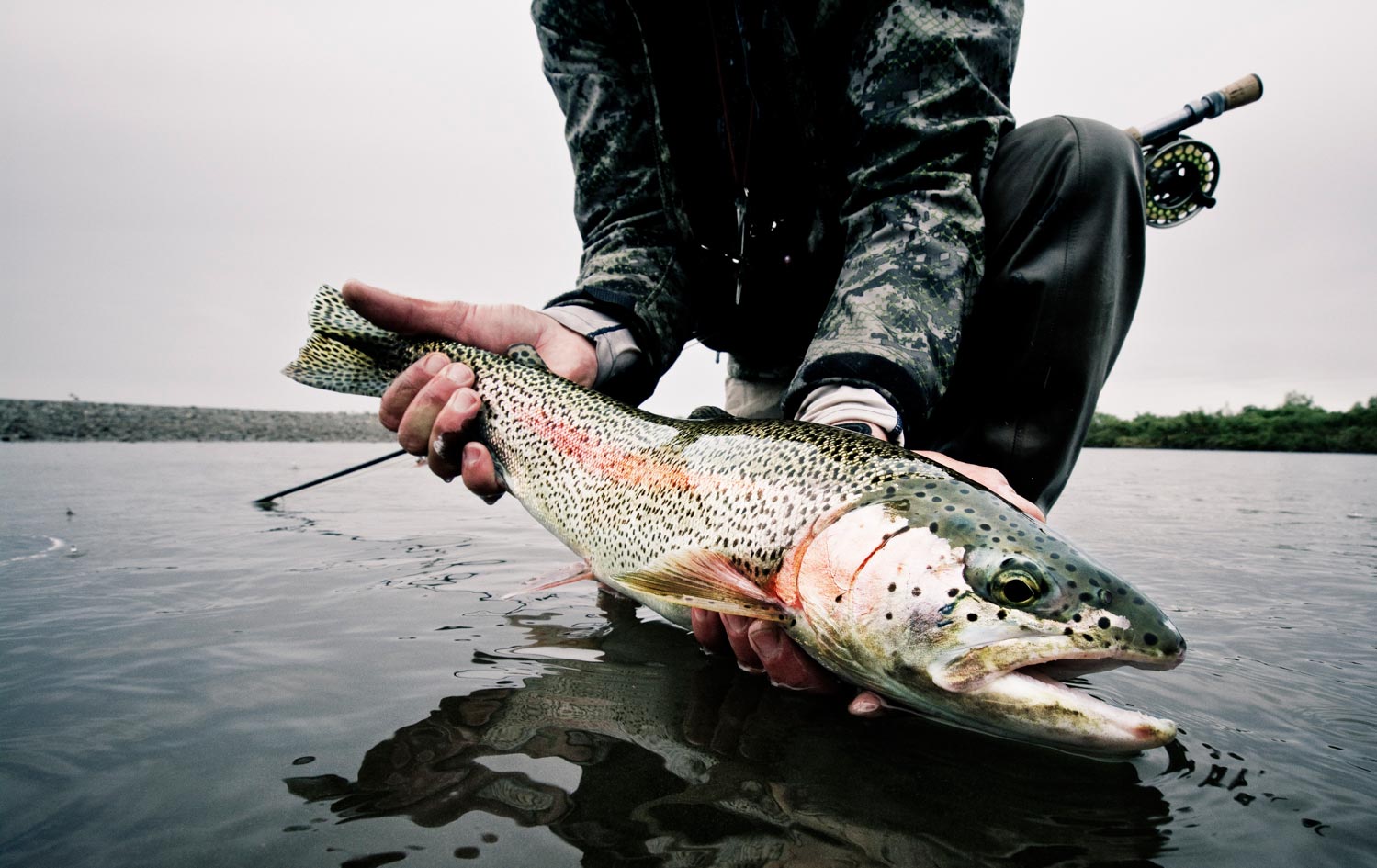
You can take better photos of the fish you catch and still practice good Catch-and-Release.
Is the fly fishing media turning anglers off to catch-and-release? I received a pretty agitated email form a reader the other day. Thankfully, he was not responding to anything written here on G&G but from this excerpt you can see he was pretty fired up and honestly, so am I.
“All of the blogs and articles I am beginning to see pop up everywhere telling me that catch and release is harmful to the fish, and I’m doing it wrong, and I’m killing all the poor fragile little
fishies, and I should never take the fish out of the water, and blah, Bah, BLAH!!!! AAARRRGGGGHHH!!! Are you kidding me? Now I can’t even take a quick cheesy grip and grin photo with a fish without being ‘that guy?’ ”
Our friend suggested that he releases 99% of the fish he catches and I gather from his email that his heart is in the right place. I have no way of knowing how good his actual catch-and-release practices are but he’s clearly trying to do the right thing. It’s also clear that he’s feeling a little harassed.
Catch-and-release is a topic that’s dear to my heart and it’s been a while since I have written about it. I thought I’d take this opportunity to try and put a friendlier face on what the fly fishing media is trying to accomplish.
THIS IS NOT A SERMON!
So what’s going on in the fly fishing media?
I imagine that a lot of writers in the field feel the same way I do. We spend a lot of time as ambassadors of the sport and we introduce a lot of new folks to the water we love, and share. While I firmly believe in that mission, I do feel morally obliged to do everything in power to not screw it up for everyone. It’s a topic I lose sleep over. If I have a hand in creating more, and more effective, anglers then I am duty bound to make them more responsible anglers.
So the result is that you, the reader, get preached to a whole bunch about how you handle fish. Recently a lot of that preaching has been aimed at demonizing the photographing of fish. That’s not really fair. Do a lot fish get injured in the process of saying cheese? You bet they do, but it doesn’t have to be that way.
If you are not going to photograph a fish, and every fish does not need to be photographed, then it’s always best to release it without taking it from the water or even handling it. I use the Rising Crocodile toll for just this purpose. But it’s not realistic to expect anglers to release every fish without a photo. That’s the bargain that makes C&R work.
Rather than take the, currently popular, stance that you can’t photograph fish without killing them, I’m going to give you some pointers that will not only help you protect fish but take better photos.
8 TIPS FOR TAKING GREAT PHOTOS WHILE PRACTICING GOOD CATCH-AND-RELEASE
Read More »10 Tips to Keep You Catching Fish During Your Fly Fishing Travels
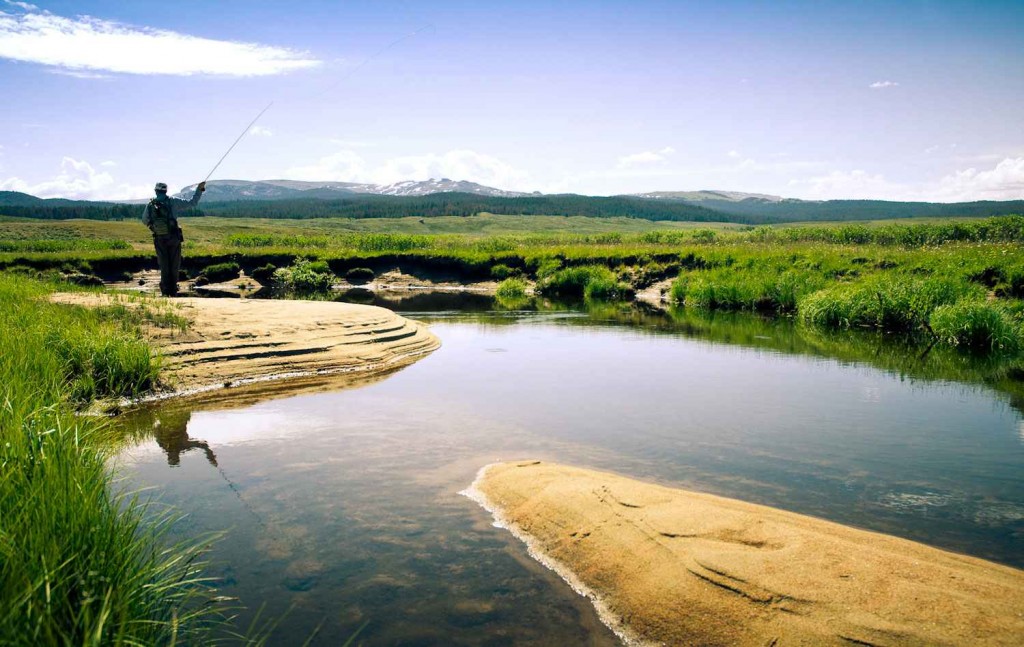
It’s easy to get out of your game when you’re traveling and fly fishing a new piece of water.
It has happened to me plenty of times, where I find myself fly fishing and going against all my fishing catching principles. Stick to what works for you on your home water and keep your confidence, and you’ll be landing beautiful fish in no time. Below are ten principles that I always make sure I live by when I’m fly fishing abroad on unfamiliar waters.
1. Spend your time fishing productive water, don’t waist your time fishing subpar water.
2. Look for the 3 C’s (Cover, Current, Cusine) to locate the hotspots.
3. Always position yourself where you can get your best presentation and drift.
4. Have your fly rig setup correctly for the water you’re fishing (nymph rig set correctly, long enough leader for spooky risers, correct tippet size, ect).
5. Take the time to figure out the food source the fish are keying in on. Take regular bug samplings throughout the day and keep an eye out for aquatic insects on the water.
6. Always fish with confidence and fish hard. Persistence usually pays off.
7. Don’t be afraid to move on if the water your fishing is slow. Even pack up and
Read More »Why Gink And Gasoline?

I get that question all the time, it’s time I answered it.
When my buddy Kent and I started Gink and Gasoline we were driving all over the country chasing fish on the fly. Things were simpler then and a hell of a lot of fun. We were living out of my Subaru Forester, packed to the gils with camping and fishing gear. and about 200 CDs. One of those CDs was “Dirt Track Date” by the band Southern Culture on the Skids, who come from Chapel Hill, NC. Just down the road from where I grew up. They just sound like home to me and I wore that CD out.
One of my favorite songs on that record is “Fried Chicken and Gasoline.” It’s about being on the road for so long everything smells like fried chicken and gasoline. That song really captured what were doing, except the fundamental components of our enterprise were Gink and Gasoline. The name stuck.
We didn’t know it at the time but
Read More »Checking Your Attitude
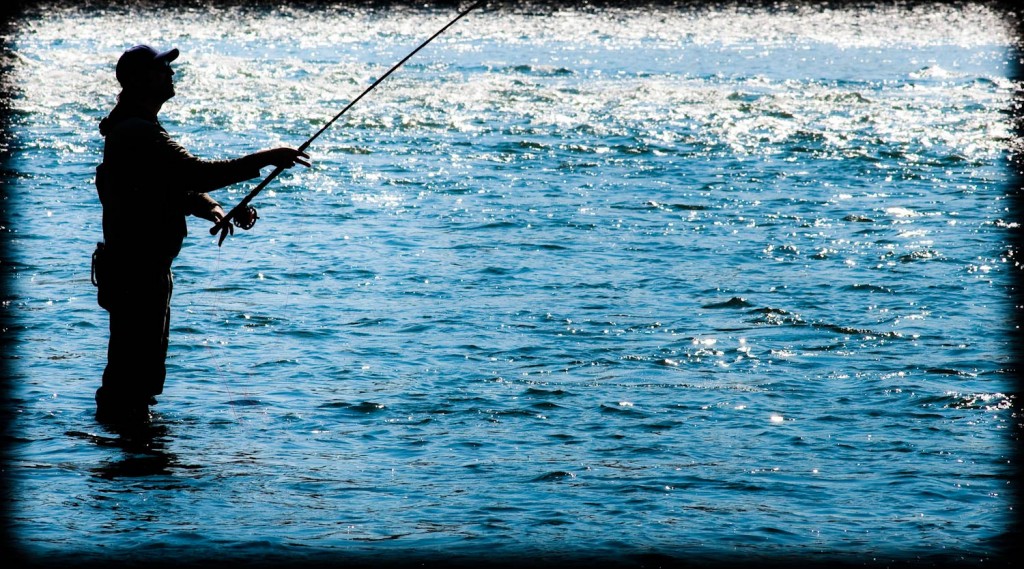
IF YOU READ THE COMMENTS ON OUR POSTS YOU’LL OCCASIONALLY SEE THE NAME TOM CAHILL. THAT’S MY BIG BROTHER.
Tom lives in Virginia. Too far away for us to fish together often but too close to have a good excuse.
He is an avid fisherman and a talented photographer. He and I have much in common. Our conversations may start off on motorcycles or politics but they usually end on fishing. I have often said that we are brothers, separated by a common hobby. Like brothers who marry sisters, Tom fell in love with bass and I with trout. I walked off up some mountain stream and he sped off at seventy mph across the lake.
The other day Tom left this comment to a post on G&G. It left me wondering why I’m the one with the fishing blog.
***
“Of all the cash we spend to catch a fish the biggest element is free. Years ago on one of those frustrating days my friend Rodney put it quite simply. Just as I was about to cast he asked ‘Are you going to catch one this cast?’ I responded with ‘Probably not!’ Rodney: ‘Then why don’t you just stand there until you are.”
“Now if you see me on the deck of my bass boat you may see me checking my line, checking my knot or checking my drag, but if I look like I’m just standing there staring a hole in the water, I’m checking my attitude.”
***
That’s Tom all over. Contemplative in the face of adversity. A talented
The Basics of Dubbing

By Bob Reece
What the beginning tyer needs to know about dubbing.
Creating beautiful, well proportioned flies is a skill which takes time and practice to master. One of the least intuitive steps in the process is working with dubbing. The thousands of dubbing choices on the market today only help confuse the beginning tyer.
Here are some basics to get you started dubbing beautiful flies.
Less is More
The most common mistake that new tyers make when applying dubbing is simply using too much of the product at one time. In general, less is more. Smaller amounts of fibers are easier to apply and lead to the creation of more anatomically accurate insect imitations. The one exception to this lies in the world of streamers where bulky dubbing loops and brushes can be used to create the large silhouettes of beefier food items.
Dubbing Types
There is an increasingly wide spectrum of dubbing varieties on the market. This can be overwhelming for new tyers. These materials are categorized based on their construction and uses. While these “boundaries” are often crossed, a few basic principles can be followed to help get you started.
Read More »Tandem Fly Rigs The Easy Way: Video
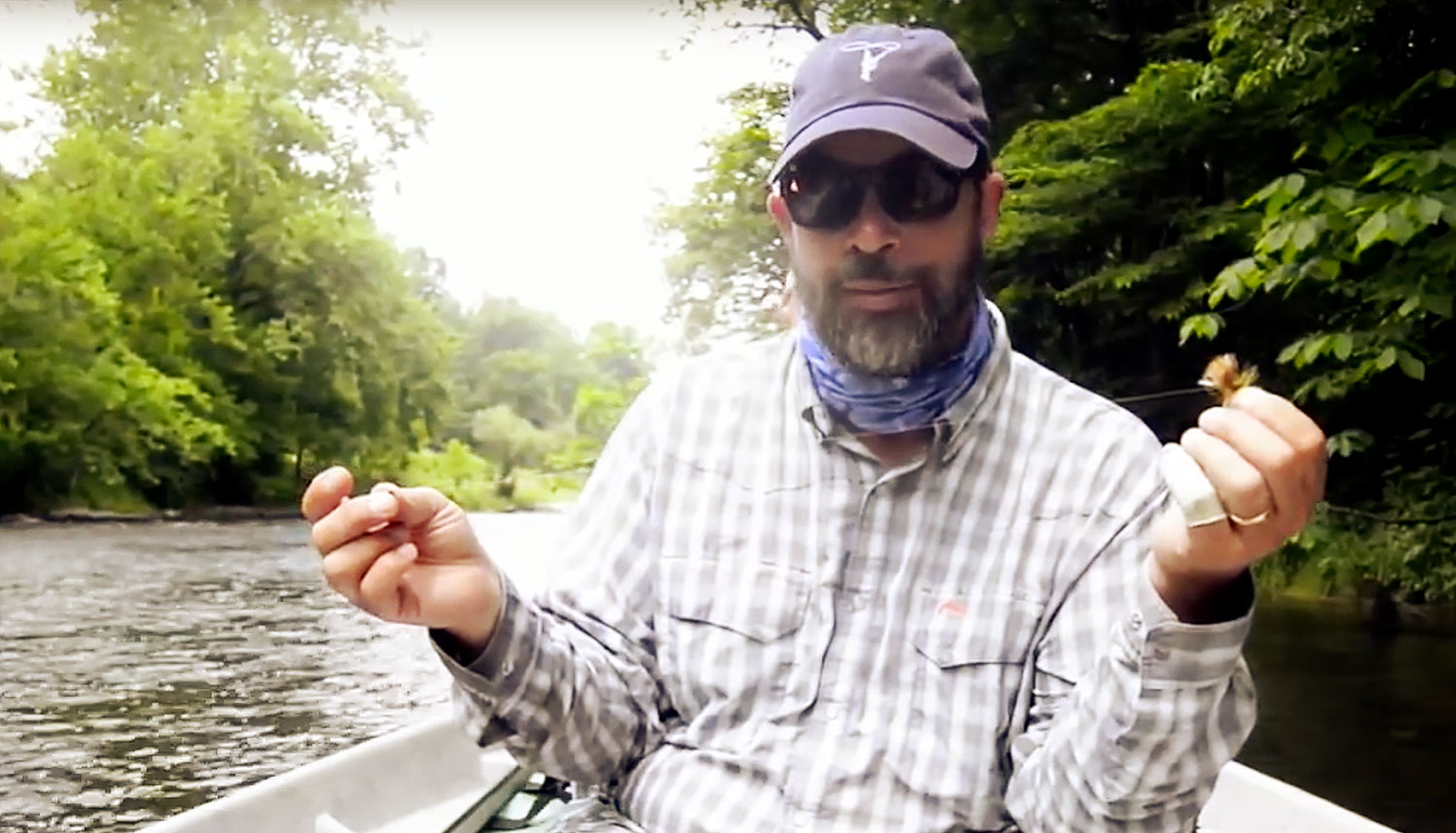
Fishing two flies is almost always better than one, here’s the easy way to set up a team of flies.
I almost never trout fish with a single fly. Whether I’m using a dry-dropper, a pair of nymphs, a streamer and nymph, or even two dry flies, I like to double my odds. There are several ways to set up a team of flies. The simplest solution to tie and fish is to tie your dropper to the bend of the hook on the lead fly. It’s fast and easy to tie and less likely to tangle than more complex setups.
If you are not accustomed to fishing tandem rigs, you should give it a try. It’s highly effective. Don’t be intimidated by the rigging or by casting teams of flies. With a little practice it becomes second nature.
WATCH THIS VIDEO TO LEARN THE EASY WAY TO TIE ON A TEAM OF FLIES.
Read More »5 Reasons Why Pocket Water Is Suited For Beginners
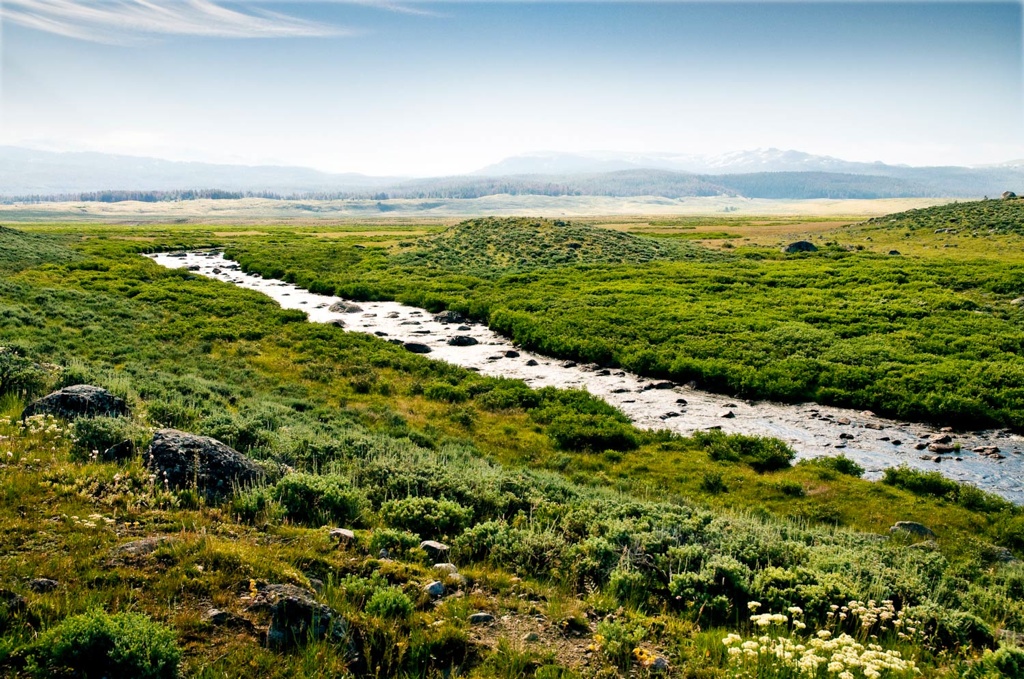
IF YOU’RE NEW TO FLY FISHING OR YOU CONSIDER YOUR SKILL LEVEL TO BE AT THE NOVICE LEVEL, HERE ARE FIVE REASONS WHY YOU SHOULD BE TARGETING POCKET WATER TO INCREASE YOUR FLY FISHING KNOWLEDGE AND TROUT CATCH RATES.
1. Pocket water provides more trout habitat than any other type of trout water.
The easiest way to define pocket water is that it’s an entire trout stream in itself. Pocket water encompasses all water types: riffles, runs, pools, and tails just on a miniature scale. The multiple current seams, eddies, and structure found in pocket water creates an abundance of habitat for trout to position themselves and feed. Quite often it provides anglers the opportunity to catch trout from one side of the stream all the way across to the other side. This is rarely found on other water types in a trout stream, and it provides fishermen much more opportunity and should increase his/her confidence that their fishing where there’s a high volume of trout living.
2. It doesn’t require anglers to make long casts and drifts.
You don’t have to be able to make long casts or sustain super long drag-free drifts to catch trout in pocket water. Because everything is on a smaller scale, anglers can get away with making shorter casts and drifts. Both mending and line management aren’t as crucial, and anglers often have the luxury of choosing which casts and techniques their most comfortable fishing with to catch trout.
3. Trout are generally opportunistic feeders in pocket water.
Pocket water is usually found on sections of river with steeper gradients and descending elevations. Water moves faster in most cases on pocket water and since trout usually don’t have as much time to inspect the food moving downstream, they often have to
Swinging Steelhead Flies for Trout
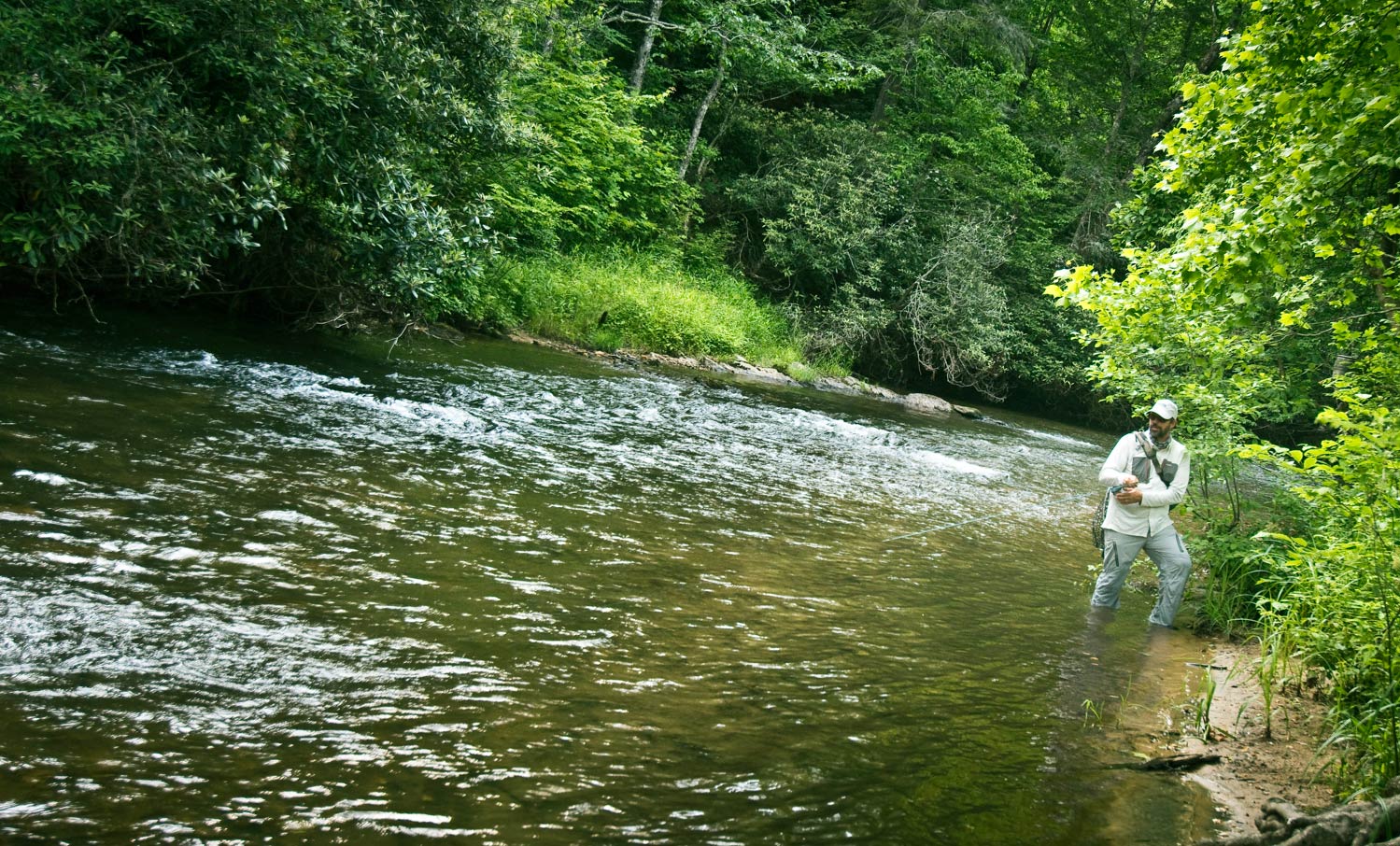
WANT TO GO STEELHEADING BUT THERE ARE NO STEELHEAD WHERE YOU LIVE?
Think about scaling down. The same flies and techniques that we use for steelhead will catch plenty of trout. And why not? Steelhead are just big sea-run trout and they have the same common instinct as their land-locked cousins.
I find myself fishing light switch rods for trout a lot these days. They are great versatile rods and I use them, not just because they’re effective, but because I enjoy it. One day, when I was swinging a small streamer with my 11′ 3″ three weight it struck me that was doing all the same things I did when steelheading. I went home and tied some of Hickman’s fish tacos in olive, size eight.
_DSC6030I caught a lot of fish on those flies but I thought I could take it further. I was tying flies for an upcoming trip to the Deschutes and I threw a couple of them in my trout box. My buddy Dan and I went fishing and devoted the whole afternoon to swinging steelhead flies. The results were awesome!
We caught a bunch of really nice fish but that’s not all.
Read More »Quality Flies
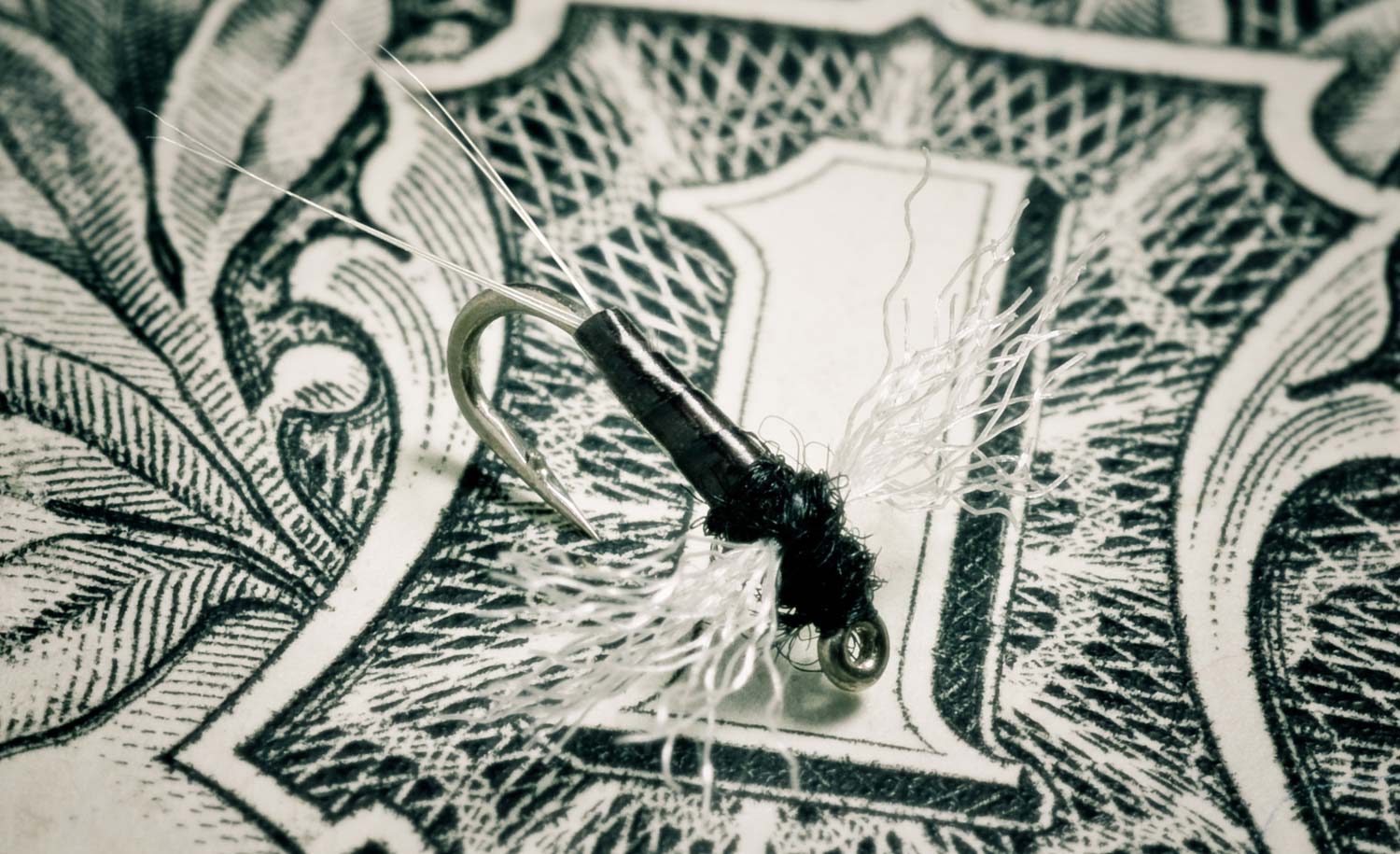
By Brian Kozminski
—SlluurpAH– “Set the Hook!”-exerts the guide.
“Ewp~ #$^@%!! Damn, I missed again!” casually disclaimers client.
“That’s the third trout you’ve missed today.” arm chair QB fishing buddy retorts from stern of the drift boat.
“Lemme check that fly, I know it’s your favorite ‘Lucky’ Adams, –BUT it is missing a hook.”
Never happened to you? Kudos, keep up the great work and spread your practices to all those who you may come in contact with. We need more vigilance like yours. Anglers who routinely check their fly and keep the hook sharp are a dying breed. Seems there is a trend in the fly market to buy volume ‘less expensive flys” from not so reputable sources. These days, I find it very hard to believe one would allow themselves to purchase a $600 reel, pair it with $800 rod and then continue to outfit and accessorize themselves in outrageous Monkey Logo’d shirts and fancy rubber pants, only to skimp on the single & most important partof the equation that actually connects them to the fish-> The FLY.
This passed summer, while waiting for clients, eating a delectable reuben sandwich, counting the number of Pine Grosbeaks, Siskins, and Purple Finches along side one of our more famous waterways, I overheard guys at a table next to me complaining about the price of flies. It was not the haughty Cherry Run Orvis store, but it was the height of big bug season, drakes were predicted tonight certainly on the North branch, possibly sections of the South, and inter-mitten log jams in between.
“$30 bucks a dozen! Thats a damn outrage!!” befuddled one guest.
Rightfully so, but when you hook a monster brown tonight, you must know a few facts about what goes into your $30/dozen flies versus the .80 per fly from Discount Fly Guy. The fly shop has a reputation to uphold, and it cannot be cut short at the terminal end of your line. The shop guys who tie flies all winter to pay the bills when rooms are not rented and few anglers make their way north for respite, only use quality hooks and materials provided by the shop owner. They in turn are paid on piece orders and quickly learn to tie a well proportioned Borchers Drake while not wasting materials nor thread wraps. I would bet my time on the water is going to be better spent using that fly versus a fifty cent knock of from Sri Lanka.
There was a guide, probably long gone now or working in Alaska, but he kept two distinct fly boxes in his boat.
Read More »